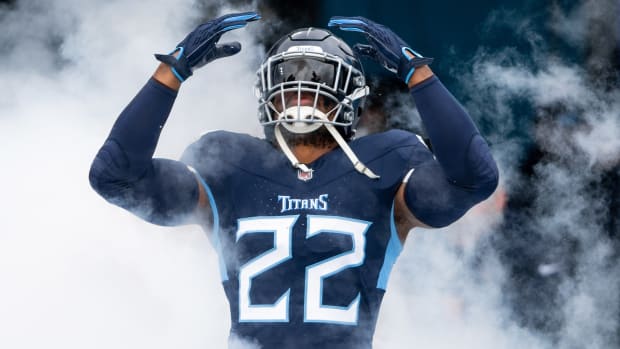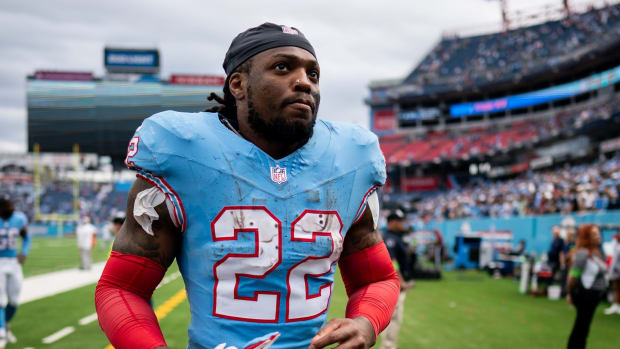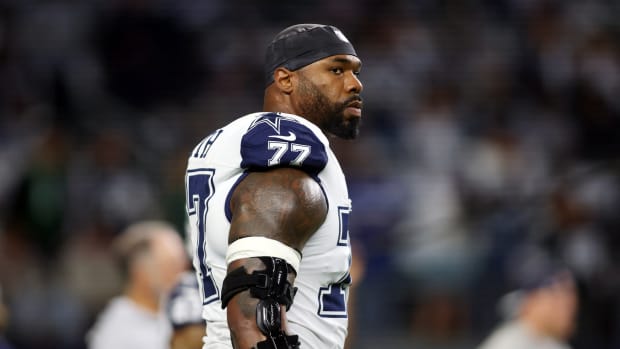History Shows Reynolds' Breakout Could Still Happen
History has a way of repeating itself. That ought to provide at least a bit of reassurance to Josh Reynolds.
When he signed a one-year, $1.75 million free-agent deal with the Tennessee Titans in March, the thinking was that the best was yet to come for the 26-year-old wide receiver who spent most of the past four seasons as a role player with the Los Angeles Rams.
Even though the Titans traded for Julio Jones, it does not mean that a breakout season for Reynolds won’t happen. Not that long ago, it happened for someone who was in nearly the exact same situation with the same team.
Sure, after the Jones deal, Reynolds’ status as the perceived starter opposite A.J. Brown vanished and – at best – he looked to be the primary slot option and No. 3 wide receiver. Not exactly what he envisioned when he said he saw himself as a suitable replacement for free-agent departure Corey Davis, who had nearly 1,000 receiving yards in 2020.
“I’m going to wait until [training] camp and see what their plan is for me, and just keep getting better and learn this offense,” Reynolds said during the recent organized team activities (OTAs). “… Whoever’s out there, just make plays.”
Back in 2000, however, after three years as primarily a special teams performer, Derrick Mason was poised to be a starting wide receiver opposite Kevin Dyson, the franchise’s first-round pick two years earlier. Then, at the start of training camp, the Titans signed Carl Pickens, a two-time Pro Bowler in eight seasons with the Cincinnati Bengals.
This was before three-receiver sets and slot specialists became prevalent in the NFL, and Mason’s chances to make significant contributions to the offense looked slim at best (he had a mere 47 career receptions at that point).
As detailed in a recent analysis by Football Outsiders, Mason’s moment arrived anyway. He ultimately started 10 games and set career-highs with 63 receptions for 895 yards and five touchdowns after Dyson was injured in practice and played just two games and a hamstring issue limited Pickens to nine games played.
Most notably, Mason in 2000 finished second to Randy Moss among all wide receivers in DVOA (Defense-adjusted Value Over Average), one of the primary metrics Football Outsiders uses to rate a player’s performance.
It turned out not to be a fluke. In each of the next five seasons and eight of the next nine, he had more than 1,000 receiving yards, became the Baltimore Ravens’ all-time leading receiver and caught more passes than anyone else for Tennessee during the Titans era (1999-present). In 2001, he again was second among all wide receivers in DVOA. In 2002, he was fourth and in 2003 he was third.
“Mason's best teams fell short in the playoffs,” Mike Tanier wrote at Football Outsiders. “His offenses were designed to feed the football to running backs. … He was a slot weapon in an era not yet enamored by them.
“[But] DVOA remembers Mason as one of the best receivers in the NFL at the turn of the millennium.”
And he almost did not get the chance.
Had things gone according to plan in 2000, none of it likely would have happened. Yet things rarely have gone according to plan when the Titans have brought in high-profile wide receivers.
It is important for everyone to remember that, especially for Reynolds because his opportunity might be coming after all.




